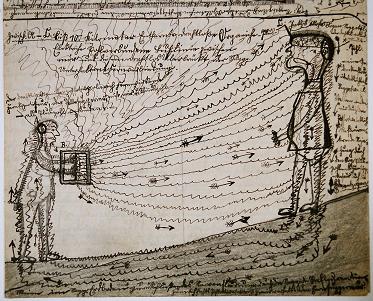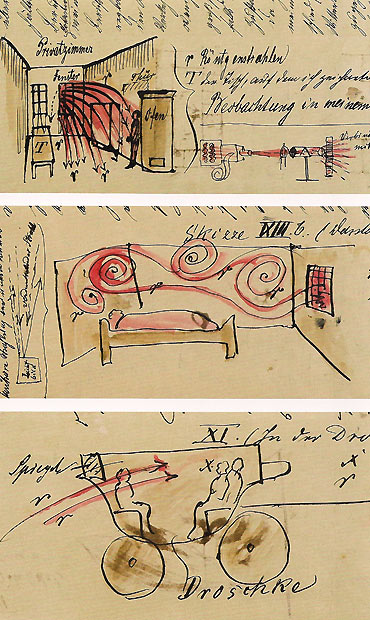Does mental illness make more sense in colour and shape than words? How do we recognise abstract pieces of work as a particular emotion. Have we been taught to express through words and not with all ranges of tools at hand? I have been researching Hans Prinzhorn, a psychiatrist from the early 20th century. He believed art was an invaluable tool into understanding the inner mind, and created an alphabet of marks and shapes which he believed belong to certain emotions.

August Natterer (1868 – 1933), a schizophrenic German outsider artist, Prinzhorn Collection, Heidelberg
Even the smallest gesture within an artwork can be interpreted, by comparing numerous cases which share similarities, a task undertaken by Hans Prinzhorn, in order to create a kind of alphabet of expressive movements. Just as expressions portray our emotions, the gestures we
make not only with our facial movements but our entire bodies have the capability to communicate to the world.
Jakob Mohr, ‘Proofs’, 1910, Prinzhorn Collection
But these gestures tend to be on a less conscious level than a smile or a
frown. It is these gestures that we may not realise are an inner manifestation of our psyche, a physiological reflex. Similar to
the natural physical responses/movements that correctly correspond to emotions we can consciously process, such as joy and anger.
Hugo Rennert, ‘My Present Condition’, 1902, Prinzhorn Collection
The works collected by Prinzhorn depict hundreds of institutionalised people feelings and situations of the early 20th Century, but how do we differentiate doodles from expression? Or are all our gestures derived from somewhere, on either a conscious or unconscious level?










































